21 Types of Grapes to Surprise Your Taste Buds
Author: Anne Cowart | Editor: Omar Alonso
Review & Research: Jen Worst & Chris Miller

Grapes are among the most popular fruits out there. Different types of grapes are available throughout the year and are easy to eat. However, what's fascinating are the varieties they come in.
All of them come in different colors, sizes, nutrition, and unique qualities. They can come in handy in different situations and adds different values to your diet.
It's best to know about the different types of grapes out there and how you can identify them. You can really add more value to your meals and make them more delicious.
Our list consists of some of the most prominent and also unique grapes out there. Who knows? You might even run into a few that you have never even heard of before.
21 Types of Grapes
Did you know that viticulture (meaning grape growing) was developed before or immediately when we as humans started our first civilization? Archeological evidence has found humans growing grapes in the Neolithic Era, as early as 6,500 B.C.!
Below are descriptions and thorough dissections of a plethora of grapes that are found across the world. Keep on reading to find out all there is to know about them and their ideal uses.
Concord Grapes
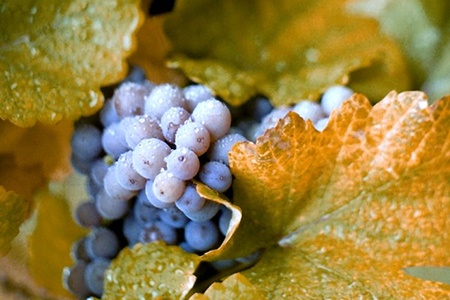
Concord grapes are one of the most common grape types in the world. It is known globally for its iconic hue of blue and purple combination.
Eating this is super simplistic as all you'll have to do is pick a fresh and clean one and pop it into your mouth, and start chewing immediately. They are also excellent for making juices, jams, and desserts.
These grapes are conveniently recognizable as their tones resemble that of a jewel. Furthermore, concord grapes have a vibrant nutritional content. They are packed with flavonoid antioxidants and phenolic resveratrol.
Pinot Noir Grapes
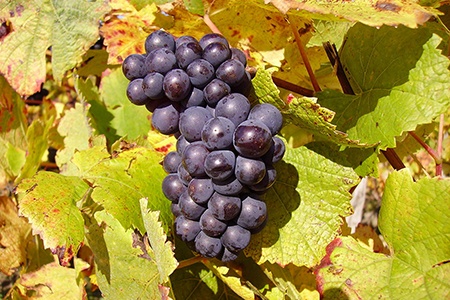
You've probably enjoyed the juice of this grape in one of the types of wine glasses you enjoy Pinot Noir from. These types of grapes are where the wine is derived from, and these grapes hail from the Burgundy area of France, though they're grown globally now.
These different kinds of grapes have have thin skins and grow in very dense clumps along the vine, giving off a deep blue and purple color. If you want to grow them, you can expect your harvest to occur from August to September.
Cotton Candy Grapes
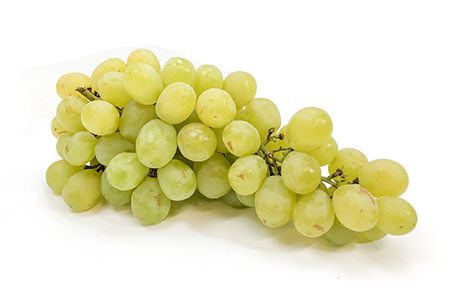
Anyone living in California is definitely familiar with cotton candy grapes. It has been a local specialty there since 2011. These grapes go through a unique hybridization process that gives them a unique taste and texture similar to candy.
They bear a green, luscious color and distinct taste, which resembles the lightness and sweetness of candy floss.
Don't let the cotton candy taste fool you, though; these grapes are incredibly nourishing. It has high levels of fiber, potassium, and Vitamin C. The only issue is the high sweetness level it has in comparison to other grape types.
Lemberger Grapes
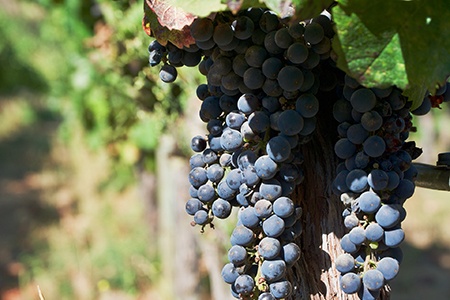
Known as blaufrankisch, the lemberger grape is what is used for making dry, tannic wines. This vitis vinifera buds early in the season, making it possible to have several harvests.
It was first grown in the Wuttemberg region of Germany but now is grown around New York and British Columbia. Their blue skins produce the tannic flavor while the fruits hold the sweetness. It can give off a bit of various types of spices and pepper notes.
Koshu Grapes
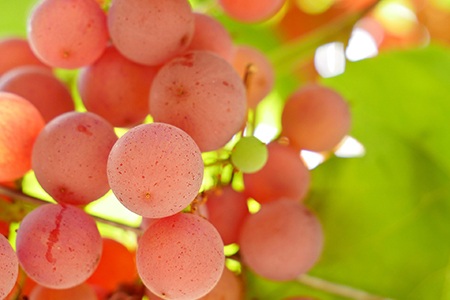
Native to Japan, this grape is possibly the most popular in their country, enjoyed not only as a finger food but also employed in the process of making wine. They have a tart, acidic flavor.
Testing suggests that the Koshu types of grapes are a resulting hybrid of various wild species before being isolated by growers in the Koshu Valley for use in fruity white wines.
Flame Seedless Grapes
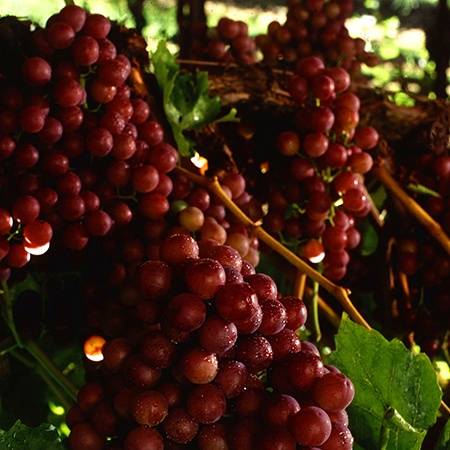
Flame Seedless grapes are a massively popular type because of their delicious taste. You can easily recognize it by its medium size and bright red color.
Finding them is convenient too, as they are available in large clusters, making it look like a burst of color in your garden. Of all the types of fruit trees, seedless grape trees are some of the most pleasurable to have right in your own yard.
Other than having a very noticeable aesthetic, they are also wonderful for your body too. There are very few grape variations that are as highly nutritious as the Flame Seedless grapes.
It's rich in anthocyanins, a plant pigment that acts as a powerful antioxidant to protect your cells from oxidative stress damage. The skin and flesh of this grape variation protect your liver tissues from cellular damage.
Centennial Grapes
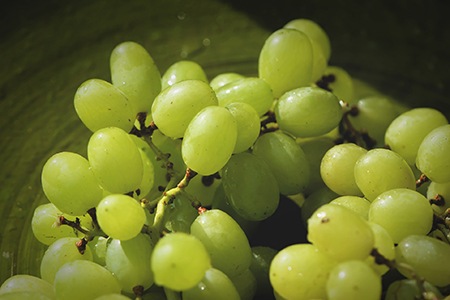
When it comes to white grapes, these varieties of grapes are among the largest. Many times, when you're plucking a grape off the vine from the bowl on the table, grabbing them from a bowl with those fruit types of forks, or popping raisins in your mouth for a quick snack, you're enjoying a Centennial grape.
These seedless grapes have a yellow skin that's just thick enough (which is to say, thin) to hide it's sweet insides. It was developed in 1966 by Harold P. Olmo at the University of California and has been enjoyed ever since.
Moon Drops Grapes
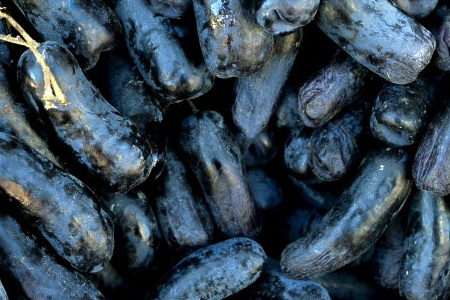
Moon Drops is a red grape variety that is unique because of its unique shape and color. Its color is oddly familiar to that of blackberry, with dark blue hues popping out of it.
On top of that, it has a tubular shape that makes it look like mini types of eggplants visually. It has a particular harvesting time between the months of August to November.
This grape type has no seeds and has a crunch when you bite into it. It also has a beautiful dimple which serves as its unique cosmetic feature. There are various ways of eating Moon Drops grapes, all of which feel like an aristocratic snack.
You can insert fillings into it because of its large body or add it to a salad after giving it a light roast.
Riesling Grapes
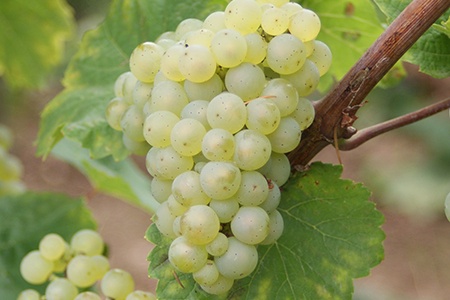
Known for growing in the cool climates of Germany and Austria and being used in their wines, it's widely popular for being extremely versatile. The acidity is said to balance the sugars perfectly and can be used in dry or sweet wines.
But their regular grape juice is so delicious as well, no matter the types of juicers you use. It's said that these types of grapes will take on some of the characteristics of the soil it was grown in, making the customization of the flavor an exciting but delicate and complicated endeavor.
Marquis Grapes
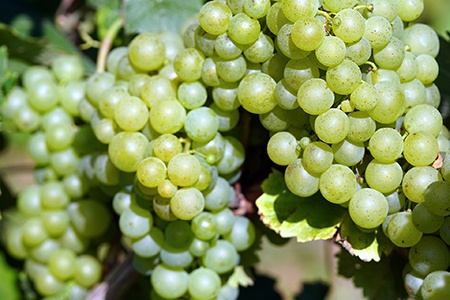
Another large, seedless, white grape, the Marquis grape is another hybridized creation, this time from Cornell University in 1966. It's a cross between Athens grapes and Emerald Seedless grapes. You'll most often see them enjoyed as table grapes or being used in many types of jam.
They're hardy grapes, capable of withstanding the cold and various types of soil. They also have large flowers with a wonderful fragrance, making them easy pollinators. All of this makes them popular with backyard farming enthusiasts.
Autumn Royal Grapes
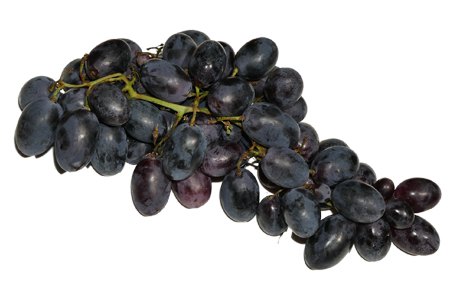
It was in 1996 that Autumn Royal grapes were crossbred in Fresno, California. The credit goes to David Ramming and Ron Tarailo, who created this seedless, sweet grape.
The dark purple skin hides a bright yellow-ish flesh that has a crunchy aspect to it that makes it a joy to eat. Due to the texture, the flavor, the size, and the seedlessness, these are fairly popular now.
Sweet Jubilee Grapes
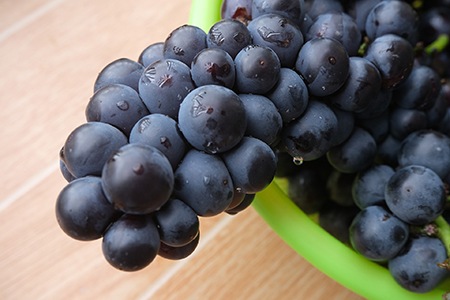
Grapery's Flavor Promise line-up has brought us many delicious grapes, but the Sweet Jubilee deserves extra attention. These large purple-blue fruits grow in loose but dense bunches, and still contain their seeds.
They have a firm texture and a sweet flavor. They grow in California and are in season between August and September, a rather tighter window than others, but it's worth the wait and skill to have them, for sure.
Black Muscat Grapes
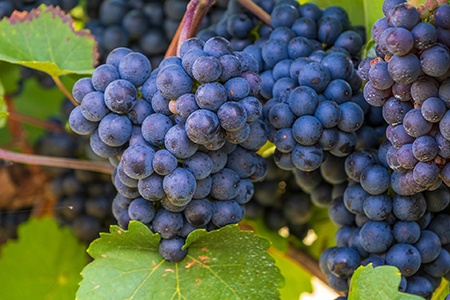
This grape type has been around human beings since the 1800s, which were created as a result of hybridizing through combining Alexandrian Muscat and Trollinger Grape.
They come in various forms and are perfect for crafting wines of different kinds, including dry red wines and dessert wines. Anyone can recognize it from the iconic aroma that wafts from it.
In the case of visuals, Black Muscat grapes feature a bluish-black color combination. They pair up well with most kinds of food, and you will love to combine it with cheese and other food having high salt content. It's also rich in bioactive compounds.
Champagne Grapes
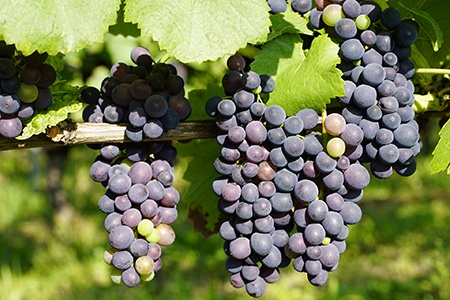
These grapes have nothing to do with the Champagne drink, which is why some prefer to talk about them under their other names which are equally confusing. One is the Zante currant, even though it's not a currant, and the other name is the Black Corinth.
Though they're mainly grown in the United States and Europe now, researchers feel they originally come from Greece or somewhere in Asia.
They're small, about the size of a pea. They have a crunch as you break the skin but are otherwise tender and plenty sweet.
Red Globe Grapes
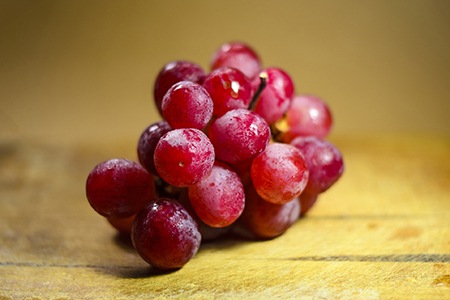
Though these types of grapes are available around the globe, they're particularly popular in Asia. Of the different varieties of grapes, these are among the few that are red in color. They have a firm and crisp inner flesh which, when cold, gives a real refreshing sensation.
Kyoho Grapes
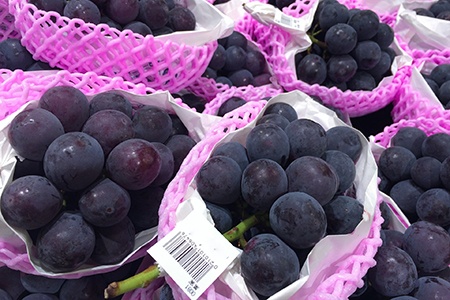
Despite hailing from vastly different regions, Kyoho grapes are most comparable to Concord grapes, especially visually since they share a similar dark purple hue. This skin is thicker than you'd expect, hiding a very sweet fruit on the inside.
These grapes can weigh half of an ounce (each one!), making them relatively huge. They're a hybridization of Centennial grapes and a variety of grapes known as Ishiharawase in Japan.
Crimson Grapes
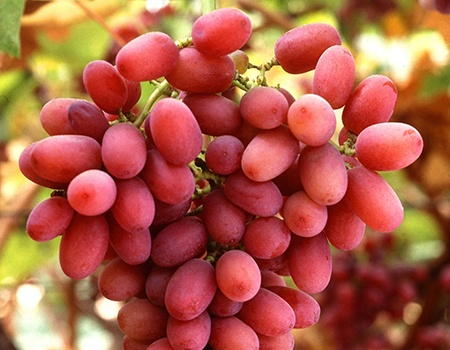
Crimson grapes are the food of those who love juicy textures. It is fully seedless, which allows smooth and luscious consumption. Simply pop one in your mouth and let the juices give you a sweet experience.
Therefore, many consider being the ultimate teatime snack or breakfast item. Its origins go back to 1989 when plant breeders brought it out in California.
Crimson grapes are incredibly healthy types of grapes for the human body. They have tons of anthocyanins in them, which helps emulsify its color while also providing tons of different benefits for consumers.
Glenora Grapes
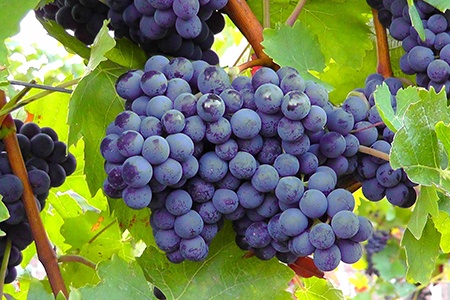
These seedless varieties of grapes were created by crossing Ontario grapes and Russian Seedless grapes in 1952. Each fruit is of a medium size, maturing into a deep blue hue in large clusters.
They're favored for being disease resistant, simple to grow, and have a sweet and spicy flavor profile. They're easy to grow in many types of gardens so give it a shot.
Dominga Grapes
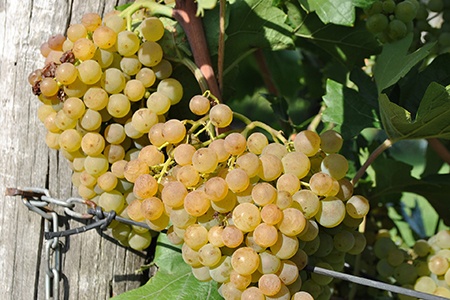
Another common table grape variety, Dominga grapes, grows in massive clusters in vines. These kinds of grapes' aesthetics feature a round body with a color that is almost the same shade as yellow.
Unlike few grape types, it has relatively fewer seeds within it, making it smooth for consumption. Furthermore, it's a popular choice among farmers because of its easy growing process.
Another excellent quality about Dominga is its ability to preserve human health. This grape variety has high quantities of polyphenol antioxidants. No other grapes have as much as Flavan-3-ols as this variation.
Your heart condition will remain fit and stable if you choose to include this in your diet on a regular basis. They are also good for keeping your brain condition on par and ensuring you can lead a healthy life by providing neuro-protective effects.
Tempranillo Grapes
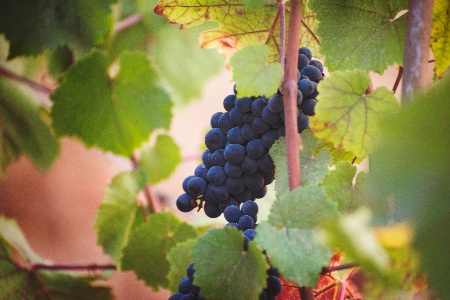
These types of grapes come from Spain and are mainly grown specifically for their use in making red wines. Their flavors are full-bodied but smooth, and give off hints of black currant, cherries, and strawberries.
The blackish colored Tempranillo grape isn't used alone, though. It's mixed with Cabernet Sauvignon, Syrah, and Grenache, as examples, to create wonderful beverages that pair with savory and spicy foods.
Thompson Seedless Grapes
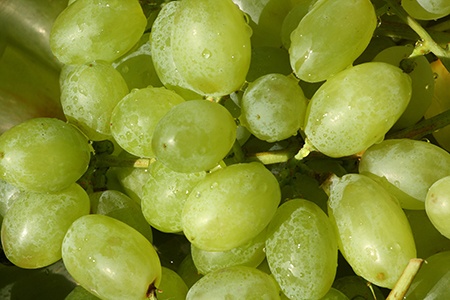
Thompson Seedless is perhaps the most common grape type in the US. It's widely available and is highly popular among Americans too. It has no seeds within and has a luscious bulge filled with juice.
Its color is green, and it takes its name after William Thompson, the person who made this brand famous in the USA.
The Thompson Seedless also has an origin story based on Persia called Sultana. It has great significance among farmers as it is beneficial for creating many other seedless grape variations.
Types of Grapes for Every Taste Preference
There you have it, a thorough description of some of the most popular types of grapes in the world. Now that you know all about them, their qualities, and their uses, it will be easy for you to decide which one will go best with your meal choice or the occasion.
Now, you won't have to ever worry about which grapes to pick while wasting hours in the grocery store.
We're even sure that you will have a blast during visits to your local grapevines hunting for the different types of grapes. Wowing your friends with all your newfound grape knowledge is bound to be a fun experience.




